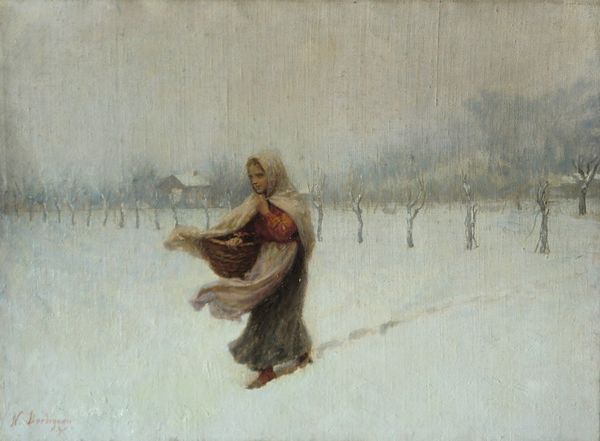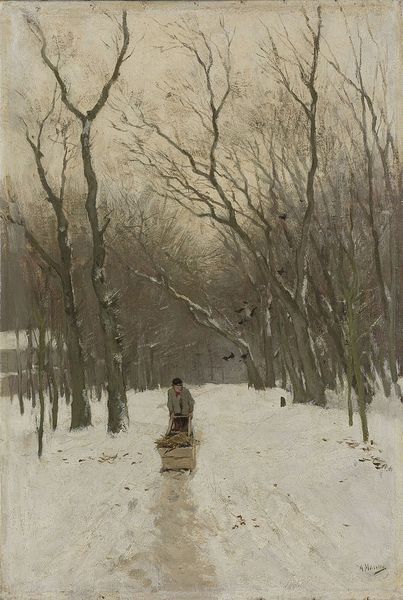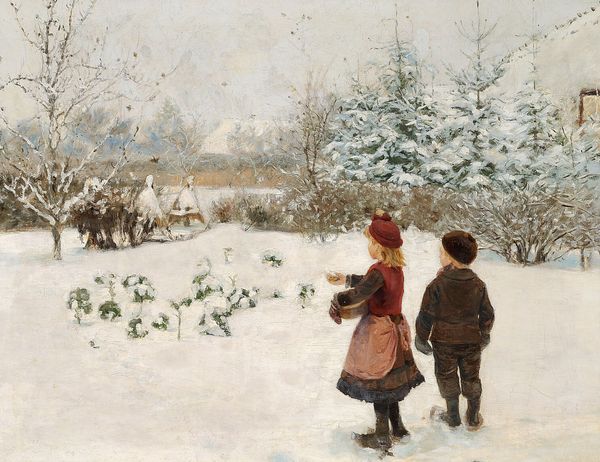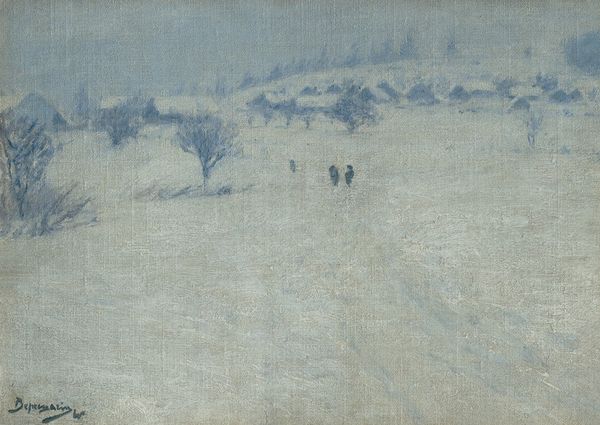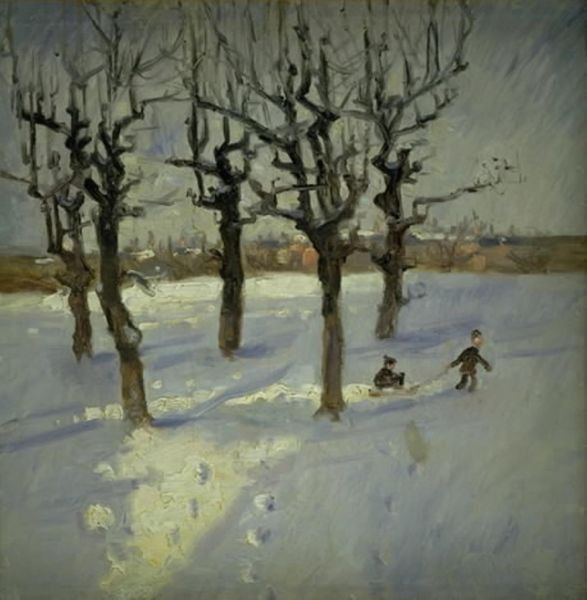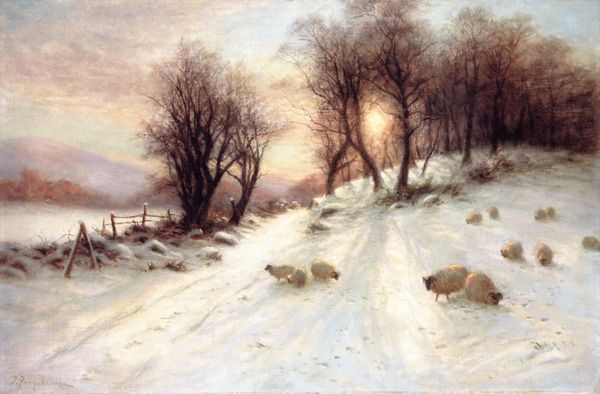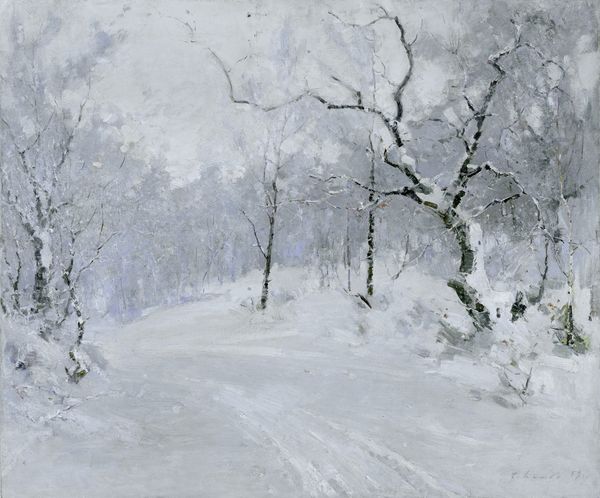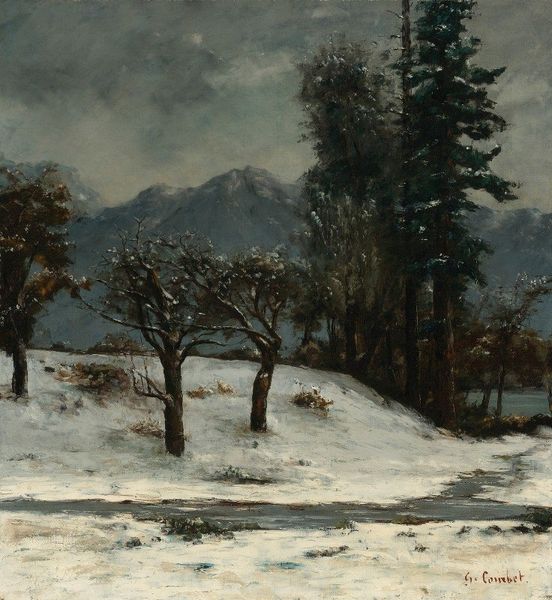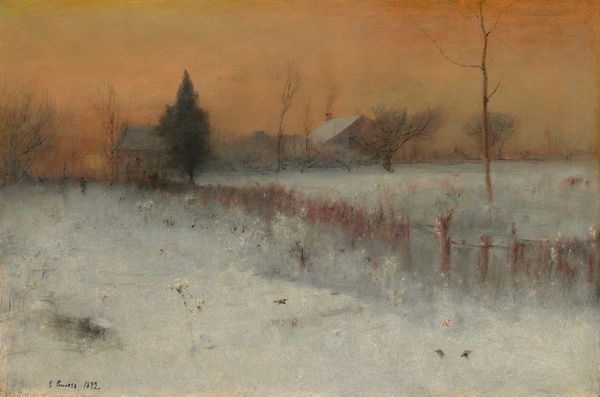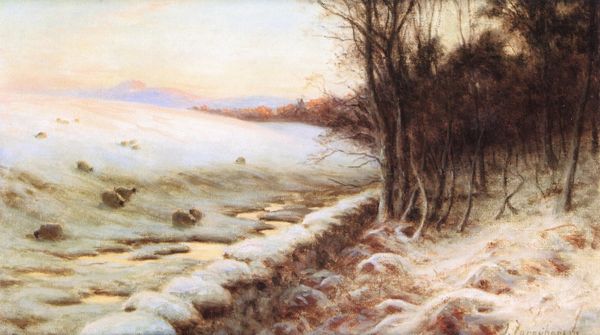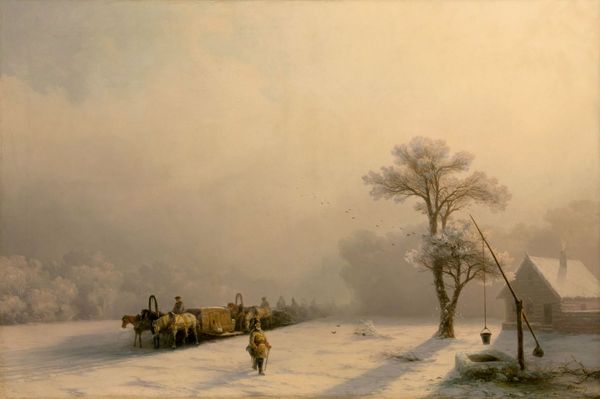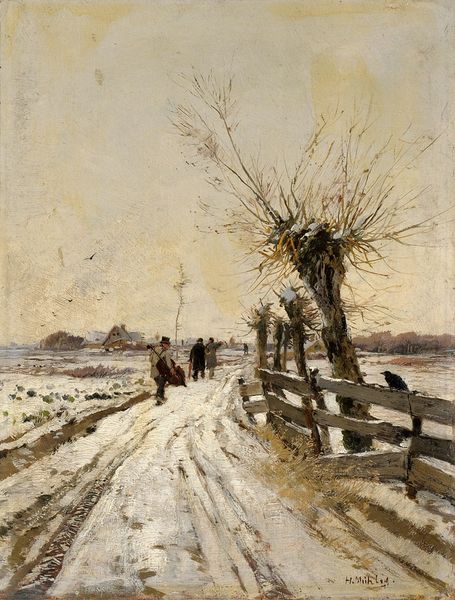
Copyright: Public domain
Curator: Looking at "Winter," an oil on canvas created around 1900 by Pasquale Celommi, what immediately strikes you? Editor: That chill. A palpable, bone-deep cold. The fog blurs the background. Everything feels muted, like sound itself is being absorbed by the snow. Curator: Celommi painted many genre scenes depicting everyday life in Italy, often outdoors. Considering the socio-economic conditions of the time, we must acknowledge the hardships conveyed here, specifically regarding women. Is this representation reinforcing particular narratives, would you say? Editor: Absolutely. It reflects the societal burdens placed upon women, highlighting the ways they carry not just their own weight, but often the weight of others, here her child, against the harsh backdrop of poverty. The figures in the distance, almost ghostly, also walk with bent heads and evoke isolation. I also notice there’s not an idealized Italian countryside—we're witnessing a more sober depiction, contrasting romantic ideals of the period. Curator: Indeed. The figures and environment are enshrouded in a gray palette. There is a somber tone about this canvas that speaks to larger truths about societal roles and the challenges individuals faced navigating these environments at the turn of the century. It pushes us to reconsider our expectations around idyllic romanticism in favor of hard realism. And yet, there is beauty here, albeit tinged with hardship. We might contemplate the use of visual signifiers for hardship – are the stooped postures symbols of carrying emotional burden or only practical reaction to the environment? Editor: Good question. The road itself, though visually simple, is incredibly important symbolically; the lines direct our vision. It's a potent symbol for destiny, for the journeys people are undertaking—voluntary or forced, by environmental and/or societal hardships. It's like a visual roadmap to a perhaps inevitable fate. Curator: Fascinating perspective! This painting isn't merely a picturesque winter scene. It's a layered commentary about identity, struggle, and endurance within its historical framework. Editor: Right. It's a narrative frozen in time—an image that lingers because it reminds us of enduring aspects of the human condition and their continuing relevance even today.
Comments
No comments
Be the first to comment and join the conversation on the ultimate creative platform.
